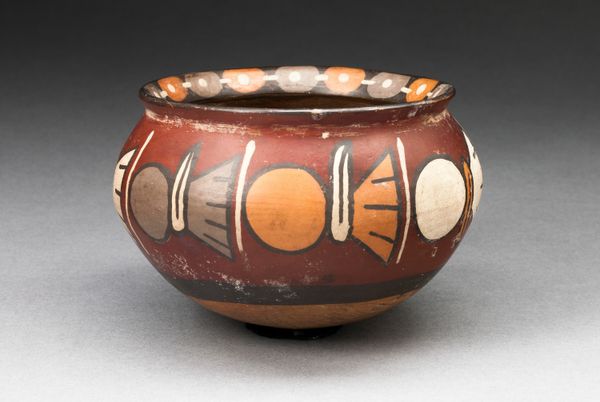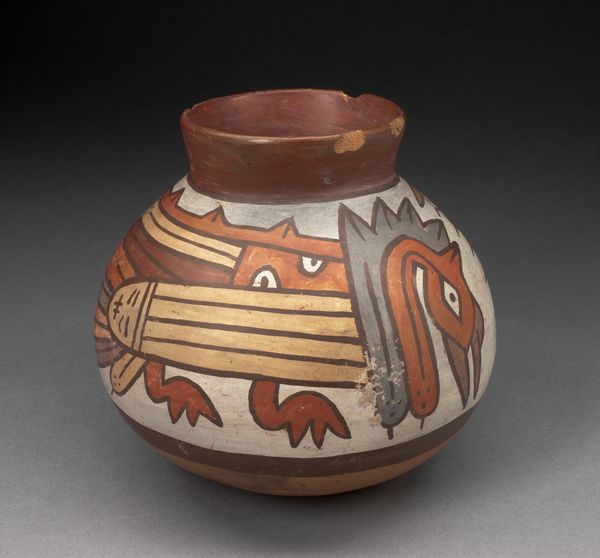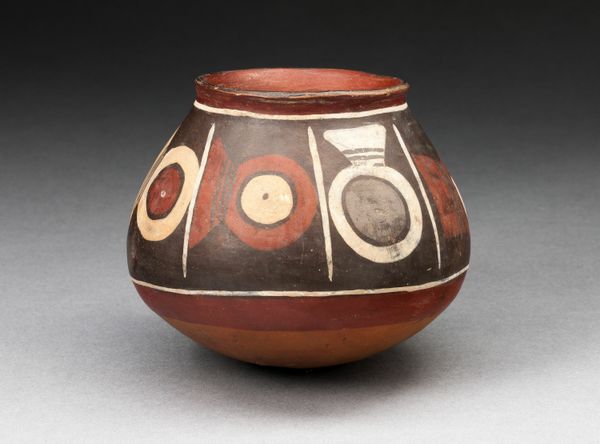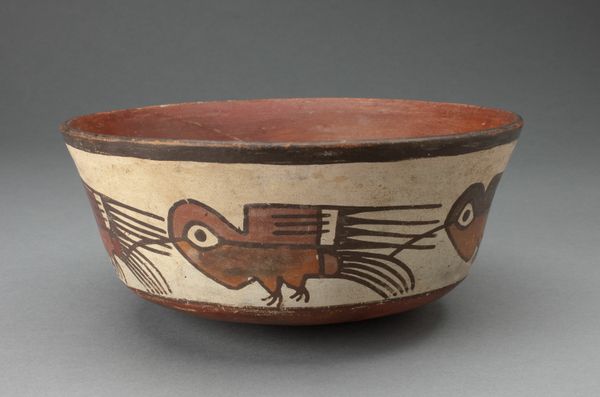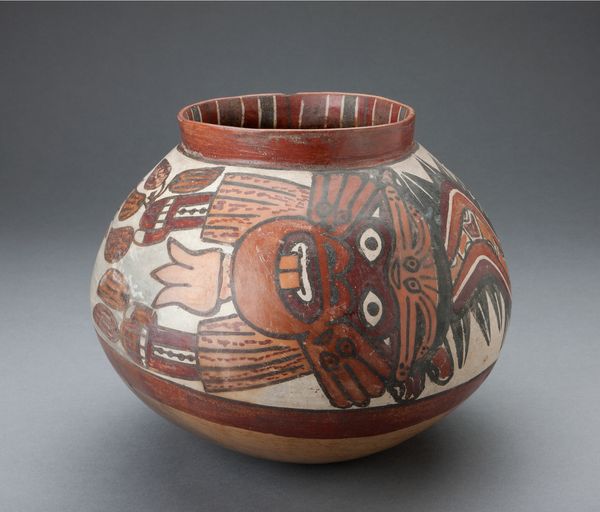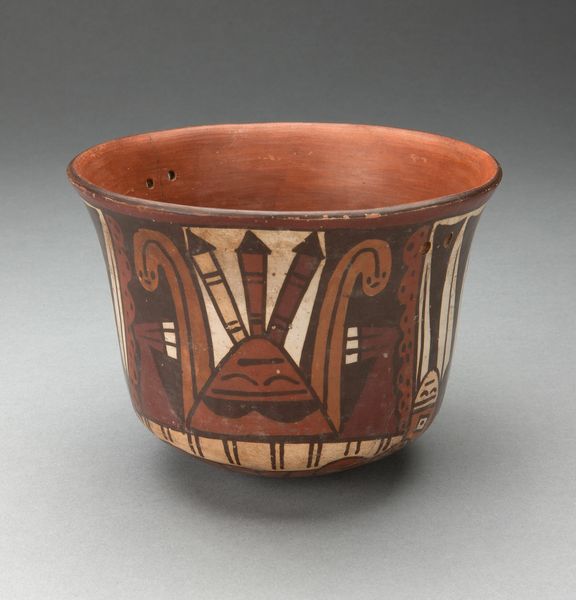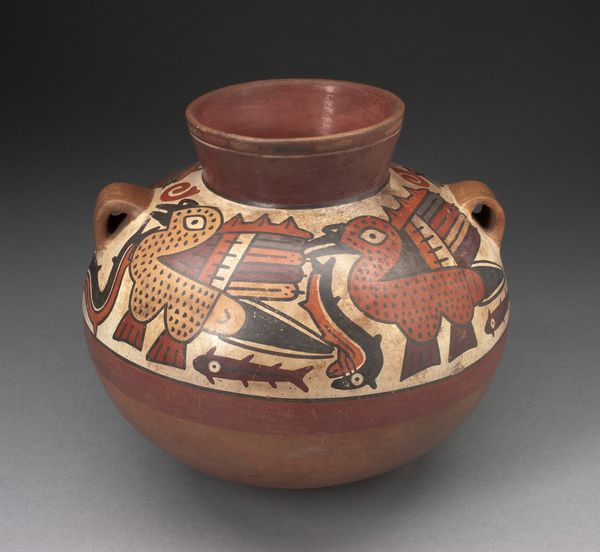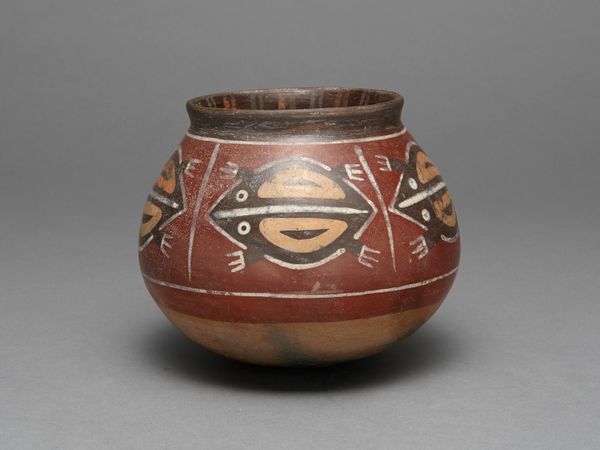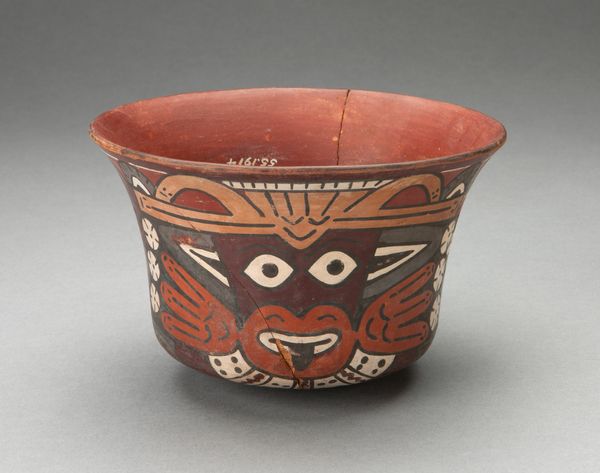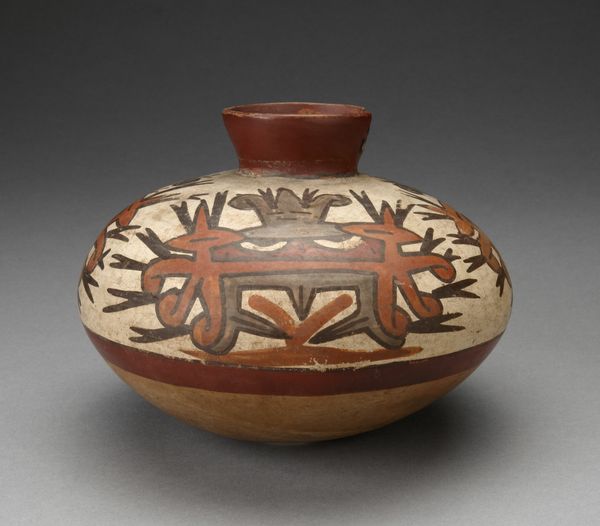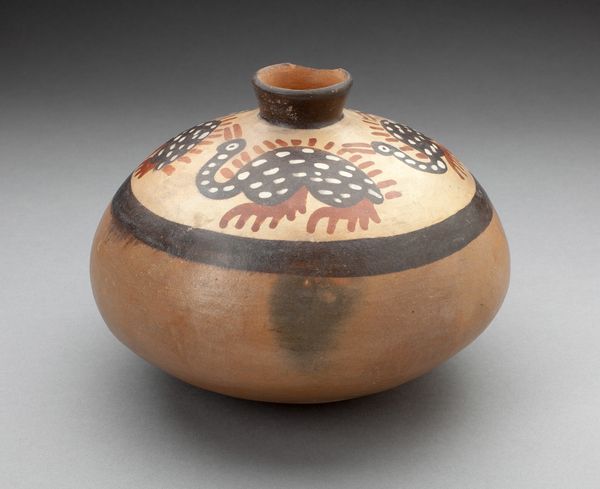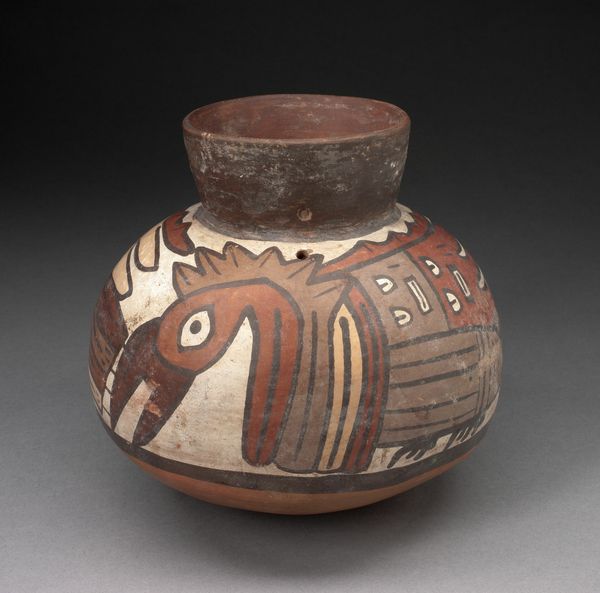
ceramic, earthenware
#
pottery
#
ceramic
#
figuration
#
earthenware
#
ceramic
#
indigenous-americas
Dimensions: 11.8 × 17.2 cm (4 5/8 × 6 3/4 in.)
Copyright: Public Domain
Curator: Welcome. We are looking at an earthenware bowl originating from the Nazca culture. It's called “Bowl Depicting Birds and Flowers” and it’s dated to around 180 to 500 ACE. What's your immediate reaction? Editor: I find it quite charming. There's a pleasant earthiness to the color palette and the simple depiction of natural elements – very grounding. Curator: It exemplifies classic Nazca pottery, showcasing their mastery of polychrome decoration on ceramics. Note how the artist uses the curvature of the vessel itself as part of the compositional structure. Editor: Indeed, and I am immediately drawn to how the decorations—stylized birds interspersed with flora—tell us about the culture. The careful rendering suggests a deep connection to nature, where perhaps these avian figures had special symbolic or ritual importance. It makes me wonder how women may have used, cared for, and passed this on. Curator: The formal arrangement is noteworthy as well. Look at how the dark horizontal bands accentuate the bowl's shape, creating distinct visual zones that control the eye’s movement and contribute to its overall sense of balance and proportion. Editor: That’s an astute observation. But when one examines the social function of the artifact itself, we could examine whether the vessel might have been used in ceremony, or placed within tombs for funerary rites, pointing toward rich understandings of life and death, regeneration, and the cosmos in ancient Nazca society. What was its purpose? Who crafted it? I have so many questions… Curator: What I appreciate most, though, is the formal integrity. Each motif, each color choice is thoughtfully considered within the larger structure. This integrity speaks to a sophisticated visual language, don’t you agree? Editor: Absolutely, I do agree, and thinking about what that visual language may suggest adds another dimension to our understanding of Indigenous experiences and cultural memory from this period. I appreciate the simplicity, in that respect. Curator: A marvelous artifact to consider indeed. Thank you for your time and your insight. Editor: My pleasure, and likewise.
Comments
No comments
Be the first to comment and join the conversation on the ultimate creative platform.
